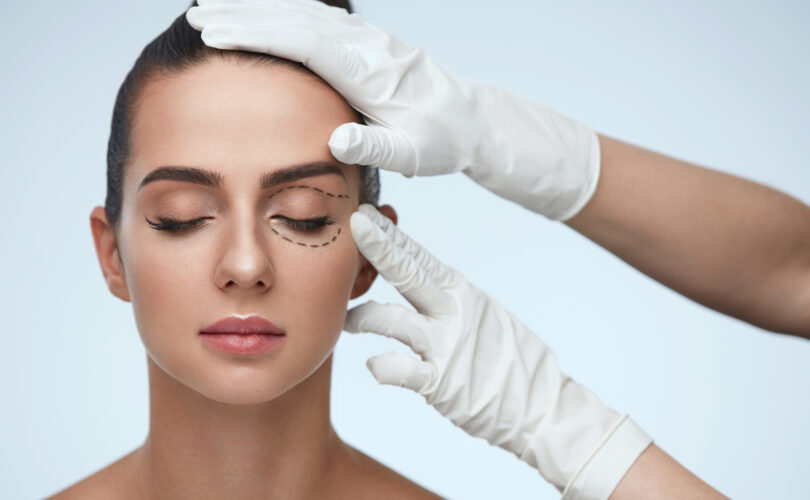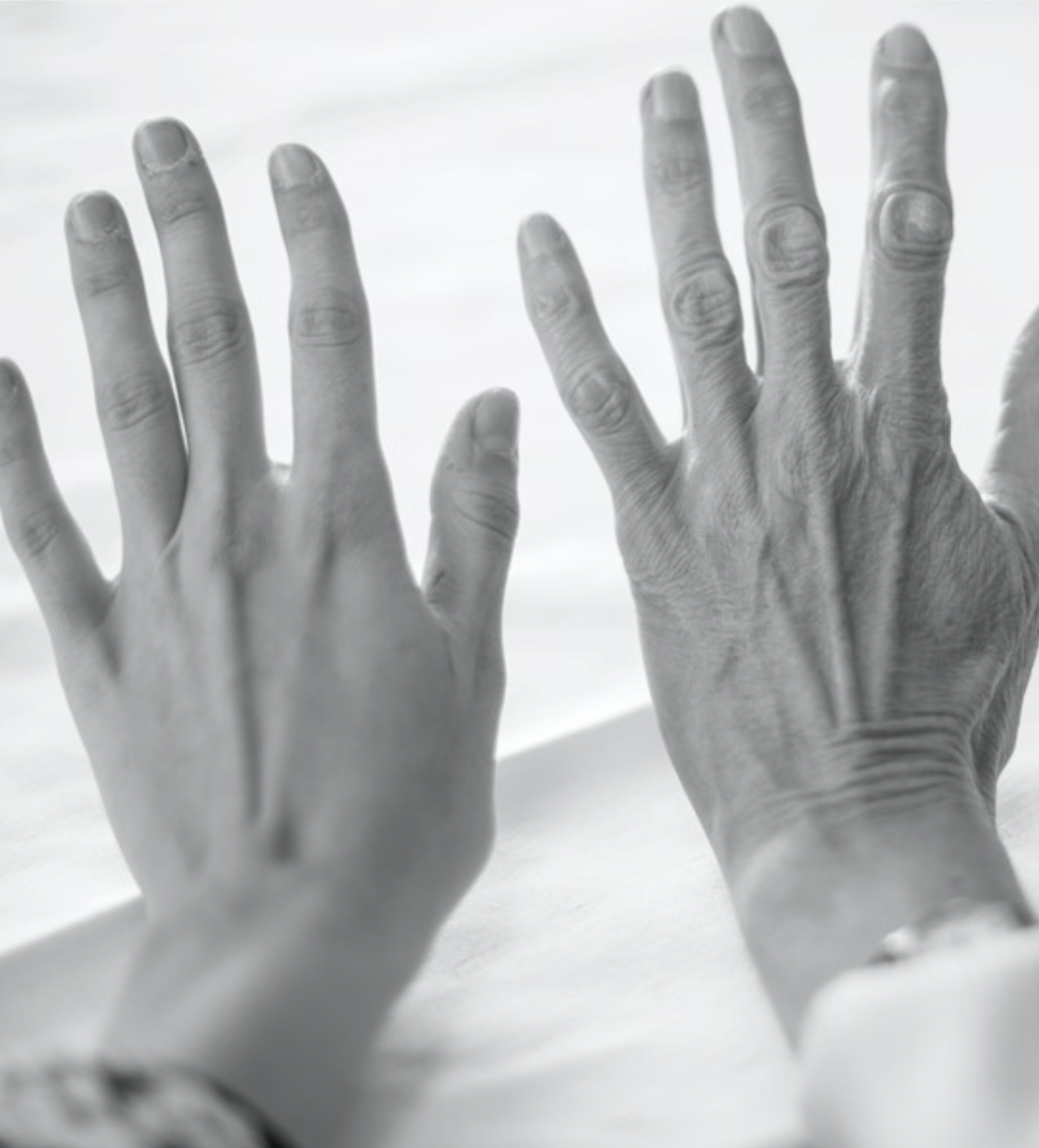While we, as estheticians, need to address very specific skin care concerns of our clients on a daily basis, from acne breakouts to dry, compromised skin, preventative aging treatments continue to be the most prevalent concern. As I wrote in Dermascope magazine, of all skin concerns, anti-aging continues to be the most prevalent, and across all age groups. We are now seeing scientific breakthroughs that may one day help us reverse signs of aging. We are also finding skincare ingredients that can help a client’s skin maintain its youthfulness through-out their life. Here, we’ll look at some of these futuristic developments, as well as give recommendations on what you can do now to help provide your clients with the fountain of youth in your spa.
Anti-Aging Market
The global anti-aging market is expected to surpass around US$ 119.6 billion by 2030. 42 percent of women ages 25–34 and 54 percent of those aged 35–44 worry about signs of aging like lines, wrinkles and lost facial volume. More than a quarter of the millennial (28 percent) women surveyed under the age of 25 admitted that they too regularly worry about how aging takes a toll on their skin. According to the findings, millennials age 25–35 reported to have started using anti-aging products as early as 26 years old. Their older counterparts, ages 55 and older, said the average age they began the relying on anti-aging products was 47.
Future of Skin Care
From IV Therapy for Skin Care, Peptides Vs. Retinol, and the importance of what is now called the skin’s Matrisome, I am always looking for the latest research and ingredients to make our clients’ dreams of having luminous, ageless, perfect skin come true. To do this, I also keep our eye to the future to see what research may lead to even bigger breakthroughs.
I know that the future of antiaging skin care could look vastly different from the moisturizing creams and lotions of the past. For example, today, science is providing hints that “cellular reprogramming” that literally can reverse signs of aging may one day be a reality. This new technology for age reversal has been explored in the lab, where controlled doses of reprogrammed proteins “reset” what is termed the epigenome—the chemical marks on DNA that control which genes get turned on or off in a cell. In aging, these markers get turned off. Reprogramming is a technology that can potentially flip the switch back, although this technology is considered to be not in the near future.
Use of exosomes, extracellular vesicles (EVs) that contain a specific composition of proteins, lipids, RNA, and DNA, are now being researched for their application in skin healing and antiaging. Exosomes are derived from endocytic membranes and can transfer signals to recipient cells mediating cell-to-cell communication. Exosomes play significant roles in various biological functions, including the transfer of biomolecules such as RNA, proteins, enzymes, and lipids and the regulation of numerous physiological and pathological processes in various diseases.
Exosomes can be used as nanocarriers to deliver small molecules to promote tissue repair. Preclinical studies of exosomes in tissue engineering and regenerative medicine have been carried in the fields of bone/cartilage repair, nerve regeneration, liver and kidney regeneration, skin repair, vascular tissue regeneration. Alginate, which is a substance extracted from seaweed such as brown algae, sea lichen, and Japanese kelp, is currently being studied to create a “scaffolding” for exosome release to deliver tissue regenerating EVs.
Alginates form the basis of many of the Seaweed based treatments from Repêchage, including second layer of the Four-Layer Facial®, and the Seaweed Treatment Mask.
Exosomes derived from Seaweeds have also been seen to help to modulate melanin synthesis by increasing the expression and activity of proteins within the melanosomes that modulate skin pigmentation.
Codium fragile and Sargassum fusiforme Seaweeds are currently being studied for use in skin care to help mediate melanin synthesis to act as a brightening agent for skin while helping reduce hyperpigmentation.
Codium fragile is found in the Repêchage Hydra Dew Pure™ Moisturizing Lift Facial and the Hydra Dew Pure™Collection for Dry, Compromised Skin, and in Repêchage Rapidex® Marine Exfoliator with Phyto-Marine Actives.
What is Skin Aging:
Skin aging is caused by both intrinsic and external factors. Internal aging is caused by the cell’s biology and genetics and leads to what is called cellular senescence, the cells degradation due to age. With this, histological changes occur within the basal cell layer. As a person ages, proliferation of cells in the basal layer reduces. The epidermis then becomes thinner, and nutrition between the dermis and epidermis decreases. This decrease also leads to a decrease in keratinocytes, fibroblasts, and melanocytes. Research also finds that with intrinsically aged skin, the ECM, or extracellular matrix , comprised of elastin, fibrillin, and collagens, degenerate. Oligosaccharides are degenerated, which in turn influences the skin’s moisture barrier.
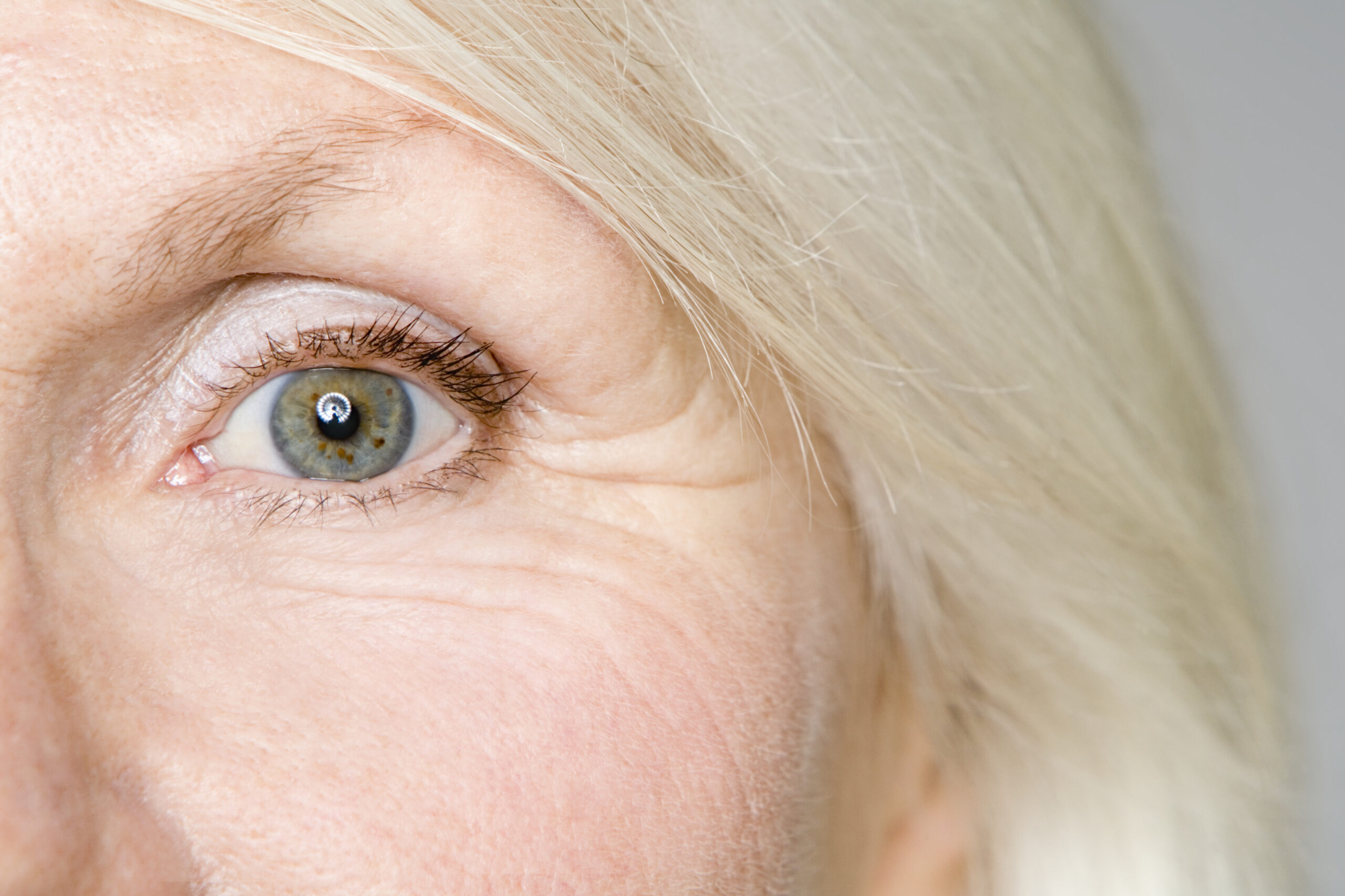
The epidermal barrier is a collection of specific diverse functions, many of which occur primarily within the stratum corneum. These include maintenance of water content and balance (permeability barrier), prevention and responses to invasion by microbial organisms and antigens (antimicrobial barrier and immune response barrier), reduction of the effects of ultraviolet (UV) light exposure (photoprotection barrier), and mitigation of the effects of oxidative stresses (antioxidant barrier). All of these important barriers exist in the skin.
Extrinsic aging is caused by external environment factors such as air pollution, smoking, poor nutrition, and sun exposure, resulting in coarse wrinkles, loss of elasticity, laxity, hyperpigmentation and rough-textured appearance. Notably, long-term exposure to solar ultraviolet (UV) radiation is the primary factor of extrinsic skin aging and is referred to as photoaging.
The overall characteristics of skin aging include:
- With each passing year the average moisture content of the stratum corneum is slightly decreased.
- Drier skin manifests in fine lines.
- The hormonal changes brought on by menopause decreases sebum production, depriving the skin its natural lubricant.
- The epidermis thins out.
- The dermal papilla, which is the anchor of the epidermis, flattens out, resulting in loose, tissue like texture.
- Cell renewal rate slows down, making healing slower.
- Circulation is impaired.
- Desquamation becomes uneven, affecting the evenness of skin tone.
- The optical characteristics of the stratum corneum, its color and its translucency change, becoming more opaque and move from pink toward yellow and grey.
- Environmental exposure and changing metabolism impact the structural proteins making skin less elastic and less firm.
- A lifetime of repeated movement results in “expression lines” around the eyes and mouth.
What Happens at Each Decade?
In the 20’s
- Fine lines can begin to form
- Combination skin, with oily T-Zone and dry periphery can cause skin to become dehydrated from improper treatment
- Proper skin maintenance now can affect how skin aging manifests
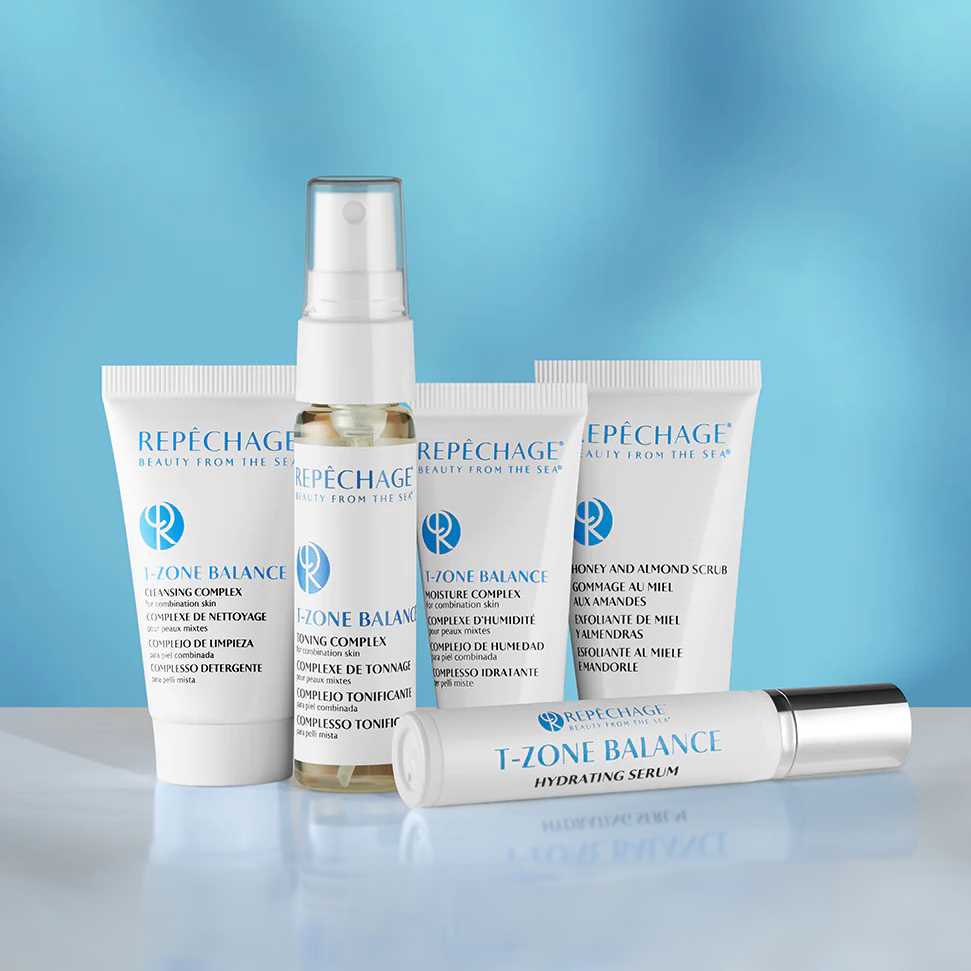
In the 30’s
- Cell turnover slows down
- Epidermal cells suffer more from environmental damage- wrinkles still may not be visible
- Dermis begins to lose some volume and bounce
- Collagen fibers aren’t as efficiently meshed, elastin coils less tight
Recommend: the Hydra Blue® Collection, including the Hydra Blue® Starter Collection for All Skin Types
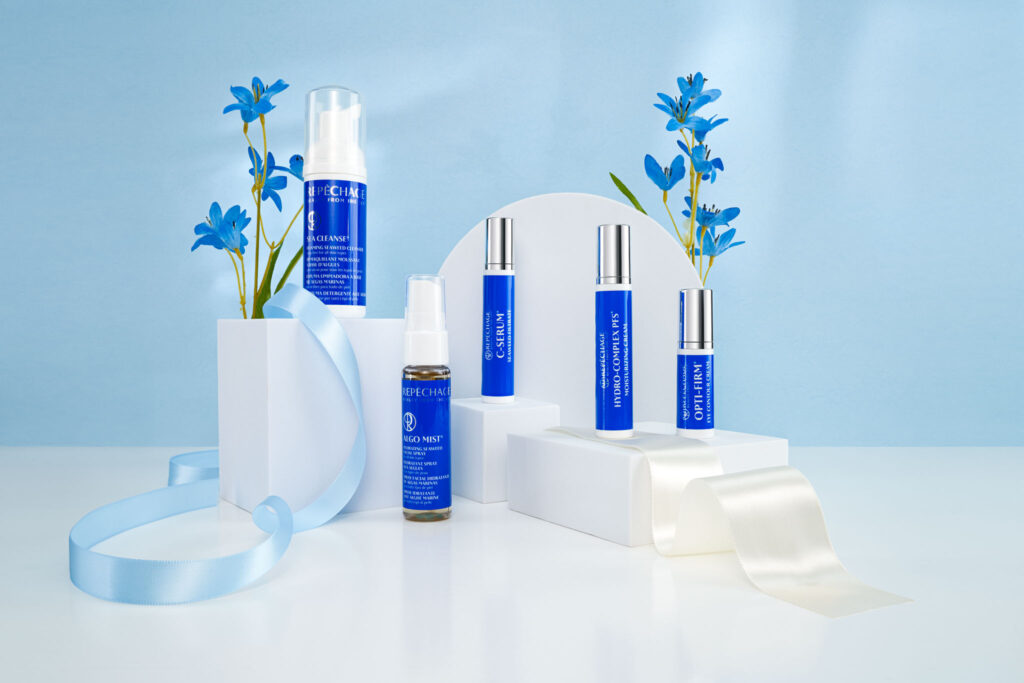
In the 40’s
- Sebum production is reduced
- Stratum corneum is thicker as more dead skin cells linger longer
- Darker pigmentation may appear due to environmental damage
- Deeper expression lines may appear
- Dilated veins may appear, as the dermis weakens
Recommend: The Biolight® Brightening Collection for Dull, Uneven Skin including the Biolight® Starter Collection.
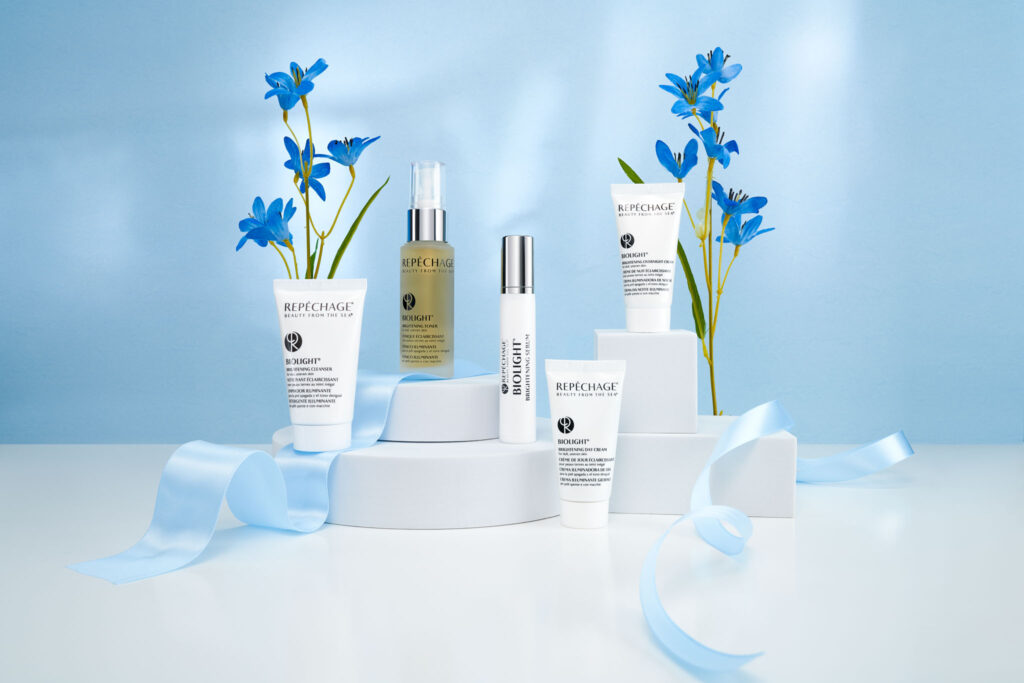
In the 50’s
- Age spots may appear
- Hormonal changes, such as decrease in estrogen, increase in androgen may lead to breakouts
Recommend: The Vita Cura® Collection for Mature Skin including the Vita Cura® Starter Collection for Smoother, Younger Looking Skin
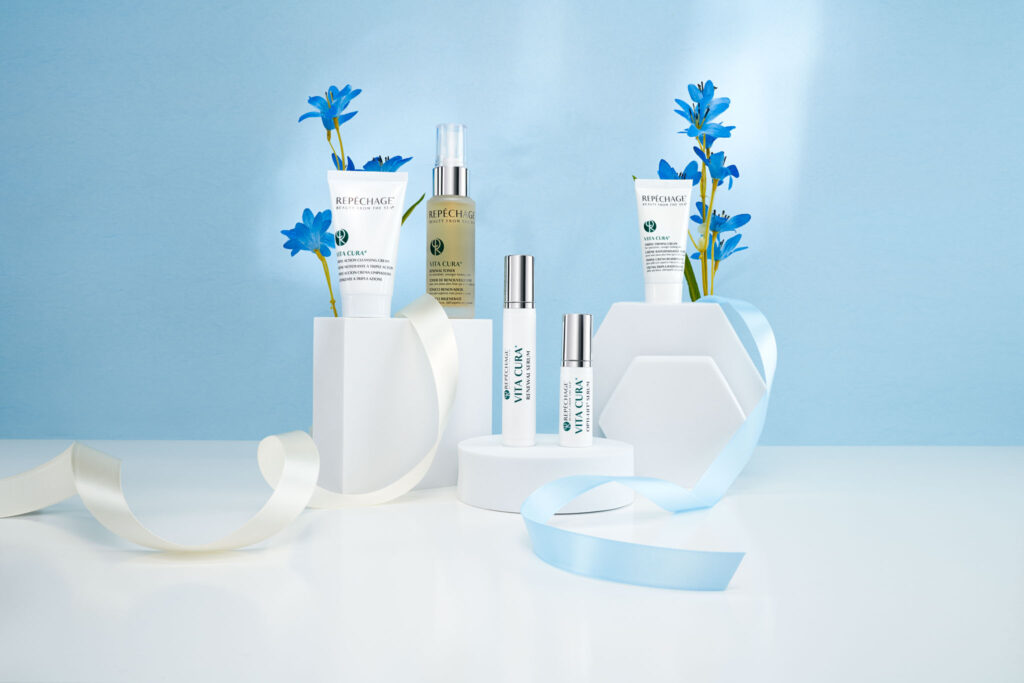
In the 60’s, 70’s, and beyond
- Genetic disposition to certain skin type/ problems (i.e. bags under the eyes, double chin, pigmentation)
- Effects of Intrinsic aging vs. environmental aging is now visible
- Less sebum production contributes to skin dryness
- Skin becomes dryer and more fragile
Recommend: The Hydra Dew Pure™ Collection for Dry, Compromised Skin which includes the Hydra Dew Pure™Starter Collection.
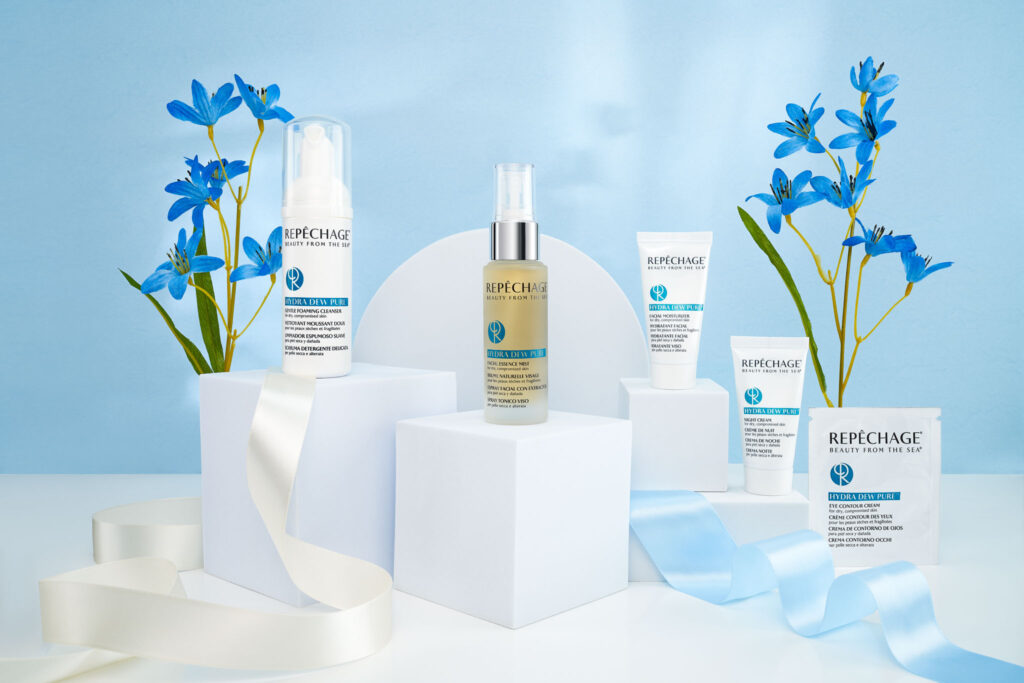
The Biggest Causes of Aging Skin: Extrinsic Aging
UV Light
Exposure to UV radiation is the primary factor of extrinsic skin aging. Up to 90% of the visible skin changes commonly attributed to aging are caused by the sun.
Absorption of UV and visible light occurs due to melanin granules in the epidermal cells. Research shows that production of collagen in keratinocytes decreased in UV-radiated skin. This type of collagen is key maintaining the structure of the skin at the dermal-epidermal area. Decrease in this production is said to contribute to wrinkles. Melanin is present to protect the skin from damaging effects of sunlight. Exposure to sunlight, especially UVA and UVB radiation, stimulates the production of melanin resulting in a pigmentation increase such as hyperpigmentation. These changes can be seen as early as in one’s 20’s.
The skin’s inflammatory response may be seen initially as erythema (redness of the skin), which results from dilation of blood vessels in the dermis as a response to the cell damage and repair process. Erythema is an indication of damage to the skin inflicted by the sun. Following erythema or sunburn, the skin responds by proliferating cell production and producing melanin, which can immediately givesthe appearance of a tan and long term result in hyperpigmentation.
Pollution
UV light is not the only factor contributing to premature aging. In a review of reactive oxygen species (pollution) and inflammation, researchers found that the skin, now under ever greater assault from pollution and toxic elements in the environment, is not able to fully neutralize these on its own. Furthermore, inflammation and the resulting accumulation of reactive oxygen species (ROS) play an important role in the intrinsic and photoaging of human skin in vivo. Environmental insults such as UV rays from sun, cigarette smoke exposure and pollutants, and the natural process of aging contribute to the generation of free radicals and ROS that stimulate the inflammatory process in the skin.
AGES
Free radicals have also been reported to participate in AGE formation and in cell damage. One important factor about AGEs is that they not only can cause damage on their own, but can be generated by free radicals. In this respect, because of the increase in environmental aggressors such as UV light and pollution, it is important to understand how AGE’s work.
Advanced Glycation End products (AGEs) are caused by too much glucose or sugar in the body and cells. Research has found that if there is too much sugar in the body, protein molecules can cross-link with sugar molecules. Once this cross-linking process has occurred, the new sugar proteins are called AGEs.
Cross-linking degrades proteins and creates AGEs, which are, in turn, responsible for leading to many age-related illnesses like cardiovascular disease, diabetes, cancer, blindness/deafness and Alzheimer’s. When it comes to the skin, glycation is believed to be the main culprit behind deep wrinkling, thinning skin and the appearance of age spots.
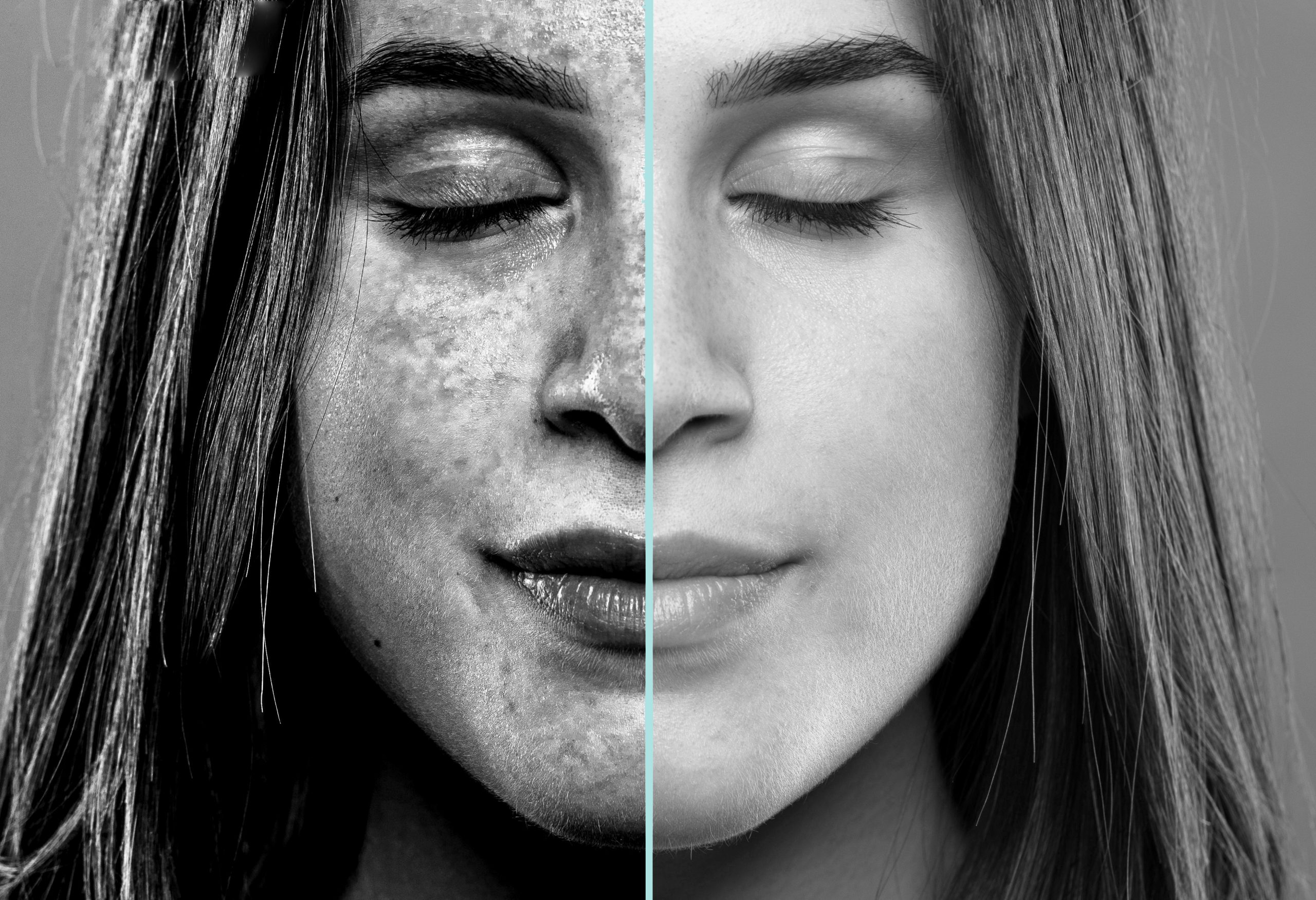
Compromised Skin:
This damage can also result in dry, compromised skin. The deeper tissues of the skin are comprised of large cells loaded with moisture. There is a moisture differential of 80% at the lower layers and 15% at the upper layers. With such a great difference, there will be a natural tendency for the moisture to move from the lower layers to the upper layers through osmosis to create a movement is called trans-epidermal moisture loss (TEWL)—a movement of moisture from the deeper layers of the epidermis, where it is highly concentrated, to the more superficial regions of the epidermis, where it is less concentrated.
The major cause of dehydration is evaporation and removal of sebum from the surface of the skin by the use of harsh, drying soaps and alkalis, as well as environmental factors such as UV light. The N.M.F. has the ability to bind moisture into the skin. When the N.M.F. removed by use of soaps and other alkalis, exfoliating chemicals such as AHA’s, manually through granular exfoliation or dermabrasion, the cells can dry and crack, producing dry skin or worse, seriously compromised skin.
This evaporation leads to a number of skin concerns, including dryness, irritation and even what some scientists call “inflammaging”— a term scientists use to describe human aging as characterized by a chronic, low-grade inflammation.
Skin Care and Ingredients for Preventative Aging:
Until scientists have devised a way to “flip” the aging switch, the best way to instill correct preventative aging habits is to advise your clients on a proper skin care program that addresses their skin care concerns, and always engaging in proper environmental protection.
Environmental protection is the important practice to reduce the risk of premature skin aging. This includes avoiding sun exposure during the times of the sun’s strongest UV light, between 10 am and 3 pm, and wearing the appropriate SPF for the skin’s Fitzpatrick scale, as well as using a full-spectrum, non-chemical physical blocker that includes zinc and titanium dioxide. A mineral-based makeup primer such as the Mineral Face Shield® can also help provide anti-oxidant protection.
The best way to advise clients on proper daily skin care is to introduce them to full program starter collections. These should contain up to five products, with enough for at least two weeks so that clients can see results.
Important ingredients to look for in these programs include:
Seaweed: Seaweeds are one of the richest sources of natural anti-oxidants, such as phlorotannins, sulfated polysaccharides, fucosterol and fucoxanthins. Phlorotannins are different from tannins in terrestrial plants, but the physiologic properties are similar. They have anti-oxidant properties, scavenge free radicals, are anti-inflammatory, have chelating activity and protect against oxidative stress in cells.
Seaweed has been shown to have the greatest bio-affinity to the human body, its chemical makeup close to the elements found in human plasma, and are a source of many important nutrients, including polyunsaturated fatty acids, enzymes and bioactive peptides. Essential fatty acids help maintain our skin’s barrier, and polysaccharides such as Alginic Acid, help to lock moisture into our skin.
Some specific species of seaweed that have potent antioxidant potential are Laminaria spp. (Laminaria Digitata) and A. nodosum (Ascophyllum Nodosum), brown seaweeds found in the upper intertidal and shallow subtidal marine environments that contains Vitamins E, C, B12, B6, B3, A, and Zn, F, Cr, Co, Mn, Na, Fe, P, and Mg, as well as F. vesiculosus (Fucus Vesiculosus), a brown seaweed found in the intertidal to shallow subtidal marine environments. Rich in vitamins, fucoidans and alginic acidic, this algae is high in antioxidant activity, and has shown efficacy in skin brightening applications. The highest level of Seaweed filtrate can be found in C-Serum® Seaweed Filtrate
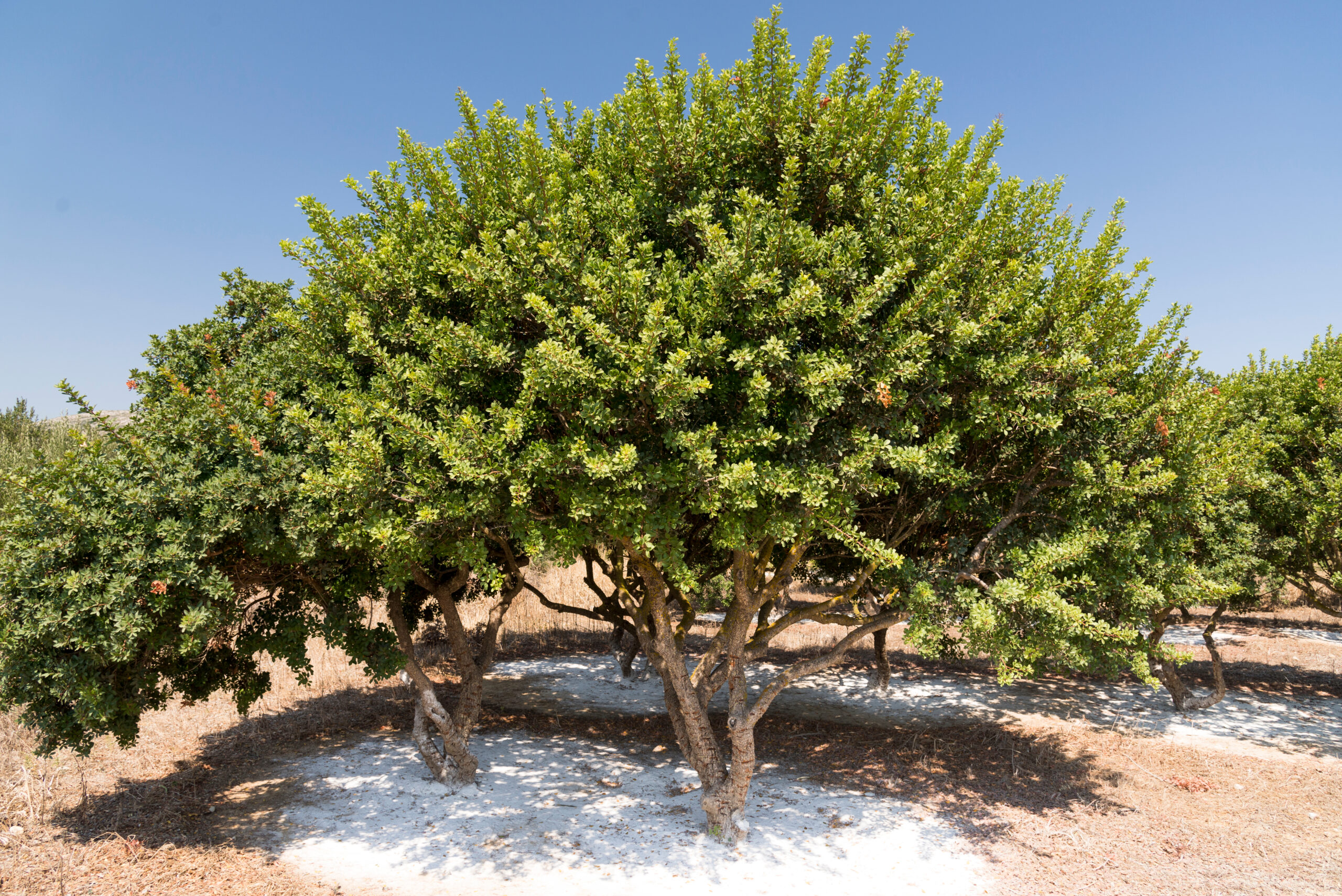
Mastic Oil and Water: Known as the “Tears of Chios,” Mastic or Mastiha is a precious, ivory-colored resin with a balsam-like scent derived from the mastic tree known scientifically as Pistacia lentiscus. Although cultivated in other areas, it is the mastic trees in the southern tip of Chios in the Aegean that are most legendary. This ingredient is known to have multiple benefits, shown to help reduce the appearance oil and pore size, as well as helping reduce the help reduce dryness, as well as the appearance of fine lines and dark spots. Mastic Oil can be found in the multi-purpose Hydra Dew Pure™ Elixir Balm.
Oxidized Glutathione: A tripeptide composed of glutamic acid, cysteine, and glycine found naturally within the skin that plays an important role in preventing oxidative damage. Research shows that this antioxidant taken orally has been effective in lightening the appearance of skin, increasing hydration, and reducing the appearance of wrinkles. Glutathione is a key ingredient in the Biolight® Brightening Sheet Mask.
Diglucosyl Gallic Acid (DGA): More potent than Vitamin C and Kojic Acid, this ingredient is known to help restore the complexion while it helps even the appearance of the skin tone. This ingredient is found in the Biolight® Brightening Serum.
Ascorbic Acid/ Vitamin C: Acts as an antioxidant by protecting the body against oxidative stress, a major contributor to aging. This is found in Opti-Firm® Lift Cream Daytime Moisturizer.
Tocopherol/Vitamins E: A natural anti-oxidant, valued for its soothing and regenerating properties. This is a major component of Essential Oil of Seaweed.
Green Tea: Extract of unfermented tea, high in catechins such as epigallocatechin gallate (EGCG), gallocatechin (GC), epigallocatechin (EGC), and epicatechin (EC), known to be an effective antioxidant. This ingredient can be found in the Vita Cura® Renewal Serum.
Quercetin: A polyphenol derived from plants responsible for their pigment color found to be a powerful antioxidant, and reported to be more potent than ascorbic acid and tocopherol. This can be found in Red-Out® Serum.
Camellia Japonica Seed Oil: Also known as tsubaki oil, this powerful antioxidant ingredient helps prevent moisture loss to help strengthen the appearance of the skin barrier function. This can be found in Hydra Dew Pure™ Facial Moisturizer.
Science is promising new frontiers in preventative aging that will equate to truly transformative skin care. Utilizing the information we have now on proper ingredients, we are able to help educate and advise our clients from an early age to start creating a lifetime of healthy, youthful looking skin.
